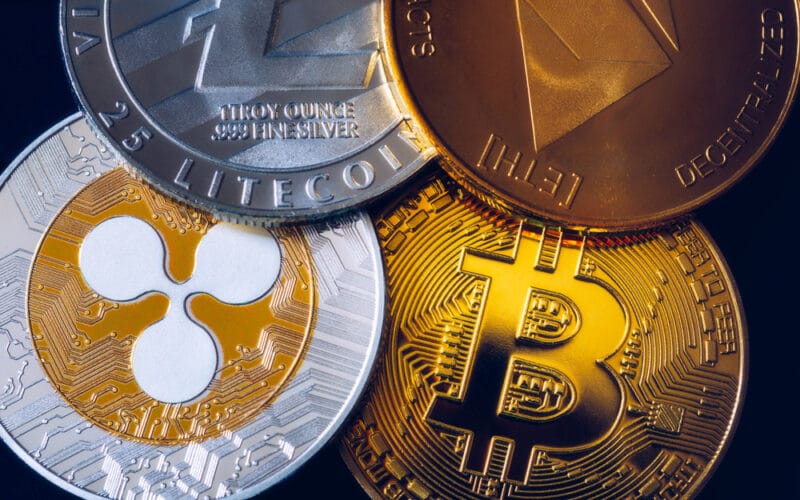Very few topics in the financial and economic world have trended more than cryptocurrencies. Despite having their immense share of criticism presently, it’s hard to deny they’ve been revolutionary.
Digital currencies possess endearing qualities such as not being issued by governments, something which is unprecedented. This unique form of money leverages the power of the internet and aims to provide financial freedom away from central authorities and into the hands of ordinary folk.
As mainstream awareness grows, many traders used to other instruments begin to look for the drivers of prices within this niche. Much of the same things affecting other markets like stocks also apply to cryptocurrencies like market cap and news events. But, of course, other elements are quite unique.
This article will cover the major factors influencing the value of cryptocurrencies.
Good ol’ supply and demand
It’s a basic law of economics that the less of a valuable thing exists, the more people desire it. In a nutshell, this concept is supply and demand, which is influential across many other markets.
The supply of a cryptocurrency is the maximum lifetime circulation. Many investors prefer to own coins with a finite supply than ones with an unlimited supply.
Let’s take Bitcoin, for example, undoubtedly the project with the most significant investment. One of the motivations for investors to hold this coin has to do with having a maximum supply of 21 million BTC.
As each day passes and we get closer to this figure, the perception of scarcity increases which can potentially amplify the price of Bitcoin.
Unlike other cryptocurrencies like Dogecoin, projects like Bitcoin, Bitcoin Cash, Chainlink, and Litecoin with a finite supply tend to be priced more expensively with a much higher market cap.
While Dogecoin is a popular project with some utility, it’s still priced quite low partly because its supply is technically infinite. People have no urgent desire to own it if they assume it will always be available.
If a cryptocurrency has a defined application and limited supply, these two factors are worth considering when assessing its potential future worth.
Unique application or utility
At this present moment, we have seen a massive influx of new cryptocurrencies, many of which perform more or less the same role. The number of new coins in the market is one of the criticisms made by experts as most projects don’t provide any unique applications.
Cryptocurrencies have evolved beyond just being used as mediums of exchange. The most worthwhile projects with the best chance of long-term success in the space have highly specific use cases.
Ideally, a cryptocurrency will want to have a first-mover advantage in solving some immense problem. Let’s take Ethereum, for instance. Ethereum was the first cryptocurrency to introduce smart contracts and decentralized applications successfully.
Although many competing coins have come about as a result, Ethereum is still the second-most traded after Bitcoin due to being an early adopter. Other examples include Chainlink, one of the first to introduce oracles, or Polkadot, one of the first to present the concept of ‘parachains’ or connecting multiple blockchains.
Overall, for a cryptocurrency to increase in price quickly, it needs to provide an in-demand use case that is hard to find or replace elsewhere.
News or media events
We have seen time and time again how a few tweets from the likes of Elon Musk have impacted the prices of Bitcoin and Dogecoin, even if the impact was short-lived. In some cases, certain news can significantly drop the value of a coin, as was the case with Ripple in late 2020 due to the SEC investigation.
We essentially refer to this element as fundamental analysis. A prudent investor keeps their eye on any events relating to major code updates, security breaches, new features, regulation, influential public figures, and just about anything else.
Crypto prices can be pretty sensitive to the media in the short and long term overall.
Cost of production
The basic theory with this element is the more expensive a coin is to produce or mine, the more valuable it becomes. This premise is pertinent primarily in cryptocurrencies utilizing mining, most notably Bitcoin.
However, others do include Ethereum, Bitcoin Cash, Litecoin, Ethereum Classic, and so on. Despite the environmental concerns of mining, most experts consider it more secure than proof-of-stake because of the high costs of mining equipment, electricity, and maintenance.
Another factor going hand in hand with the cost of production is the network difficulty. Within a blockchain, some periods allow for less competitive mining while others are more competitive.
When the difficulty increases, it also amplifies the production costs. This becomes a network effect whereby transaction fees also expand when more demand for a coin comes into play, ultimately driving up the price.
The prevalence of ‘whales’
A phenomenon that has gained some traction in recent years is the presence of ‘whales,’ individuals or institutions who own massive hoards of a cryptocurrency. The fear with whales is their ability to manipulate prices when they sell off their assets in the future.
When they initiate one large order, a substantial portion of a cryptocurrency is technically removed from circulation, which is what ultimately drives its value down. Conversely, if this group continues to buy an astronomically large amount of a coin for whatever reason, that would also have an influence.
Although it is difficult to gain the most accurate assessment of the accounts with the largest collection of an individual coin, it certainly can impact the price at any time. Many investors have begun observing whether a particular cryptocurrency does have some prevalence of known or unknown whales.
Final word
Like any other financial instrument, a plethora of factors can influence the worth of any given cryptocurrency, from the supply, utility, news, production costs, whales, and more.
This article only scratches the surface but does outline some common things to observe in the evaluation process. All investors need to conduct holistic research accounting for as many things as possible to make the most intelligent decision on future value.







